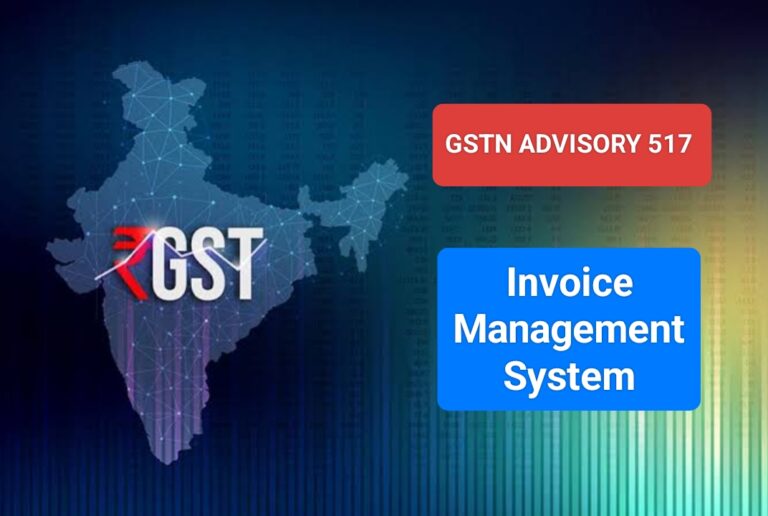This Invoice Management system (IMS) will be available on the GST portal starting October 1st. This will allow recipient taxpayers to review and either accept, reject, or keep invoices pending for later action.
The GST Network (GSTN) is set to introduce a new Invoice Management System (IMS) to streamline communication between taxpayers and their suppliers regarding invoice corrections and amendments. This new system will assist taxpayers in matching their records with those issued by their suppliers, ultimately ensuring that they claim the correct Input Tax Credit (ITC). The IMS functionality will allow recipient taxpayers to review and either accept, reject, or keep invoices pending for later action. This new system will be available on the GST portal starting October 1st and promises to be a significant enhancement to the ITC ecosystem under the GST regime.
Key Features of the Invoice Management System (IMS)
1. Purpose and Availability:
The IMS is designed to improve transparency and accuracy in GST reporting by giving taxpayers greater control over their ITC claims. It will allow taxpayers to ensure that only verified and genuine invoices are included in their GSTR-2B, thus forming the basis for their eligible ITC claims.
This system will be fully operational on the GST portal starting from October 1st.
2. Invoice Actions:
Accept: Invoices that are accepted by the recipient taxpayer will automatically appear in their GSTR-2B as part of the “ITC Available” section. The GST associated with these invoices will be auto-populated into GSTR-3B as eligible ITC.
Reject: Invoices that are rejected will not be included in GSTR-2B and, therefore, will not qualify for ITC. These invoices will appear in the “ITC Rejected” section of GSTR-2B.
Pending: Invoices marked as pending will not be included in GSTR-2B or GSTR-3B until further action is taken. Pending invoices will remain on the IMS dashboard for future action and can be accepted or rejected in subsequent months.
3. Impact on GSTR-2B:
Only accepted or deemed accepted invoices will be included in the recipient’s GSTR-2B. This ensures that recipients have full control over the invoices that form the basis of their ITC claims.
If no action is taken on an invoice, it will be considered “deemed accepted” when GSTR-2B is generated.
4. Amendments by Suppliers:
If a supplier amends an invoice before filing GSTR-1, the amended invoice will automatically replace the original invoice in the recipient’s IMS dashboard. The updated invoice will reflect in the subsequent month’s GSTR-2B for ITC purposes.
In cases where suppliers amend invoices after filing GSTR-1 through GSTR-1A, the amended invoices will also flow to IMS, but the corresponding ITC will be reflected in the recipient’s GSTR-2B of the following month.
5. Pending Invoices and Section 16(4):
Invoices kept pending by the recipient can be acted upon at any point in the future but must be finalized within the time limits prescribed under Section 16(4) of the CGST Act, 2017. This provision prevents the indefinite postponement of action on pending invoices, ensuring that ITC is claimed within a stipulated time frame.
6. QRMP Taxpayers:
Taxpayers who are part of the Quarterly Return Monthly Payment (QRMP) scheme will also benefit from the IMS. Invoices saved or filed through IFF by QRMP taxpayers will flow into IMS, and the actions taken by the recipient will determine their inclusion in GSTR-2B.
Unlike regular taxpayers, QRMP taxpayers will have their GSTR-2B generated quarterly rather than monthly.
7. Sequential Filing and GSTR-3B:
The system ensures that GSTR-2B is generated only after GSTR-3B for the previous return period has been filed. This sequential approach ensures that ITC claims are consistent and aligned with the previous month’s filings.
Additional Details of IMS Functionality
1. Mandatory Re-Computations:
If a recipient taxpayer takes action on any invoice after the 14th of the month, they must recompute their GSTR-2B. This re-computation ensures that all recent actions, whether it is accepting, rejecting, or keeping invoices pending, are accurately reflected in the ITC calculations.
2. Exclusions from IMS:
Some supplies will not flow through IMS but will directly populate in GSTR-3B. These include inward supplies under the Reverse Charge Mechanism (RCM), where the supplier has reported in Table 4B of GSTR-1/IFF, as well as supplies where ITC is ineligible due to Section 16(4) of the CGST Act or Place of Supply (POS) rules.
3. Handling of Amended Records:
In cases where an invoice has been amended, it is mandatory for the recipient to take action on the original invoice and file GSTR-3B for that period before dealing with the amended record. This ensures that the original and amended invoices are not in conflict across different GSTR-2B return periods.
4. IMS Workflow:
All outward supplies reported in GSTR-1/IFF/GSTR-1A will automatically populate in the recipient’s IMS dashboard. The recipient can then take the necessary actions—accept, reject, or keep pending—on these invoices.
Once GSTR-3B is filed, the accepted or deemed accepted records will move out of the IMS dashboard and be reflected in the ITC claims for that period. Pending records, however, will stay on the dashboard until further action is taken.
5. Supplier’s Liability Adjustments:
If an invoice or credit note is rejected by the recipient, the supplier’s liability for that period will increase, as the rejected transactions will be reflected in their GSTR-3B for the subsequent tax period.
Conclusion
The new Invoice Management System (IMS) introduced by GSTN represents a significant enhancement to the GST ecosystem, especially in the context of ITC reconciliation. By enabling taxpayers to take direct action on invoices before they are reflected in GSTR-2B, IMS gives them greater control and oversight, reducing the chances of discrepancies and errors. With the introduction of IMS, taxpayers will be better equipped to ensure that their ITC claims are accurate, timely, and compliant with GST regulations.
To Access and Download the official Notification of the GSTN Advisory Click Here
READ MORE
Expectations from the 54th GST Council Meeting on September 9, 2024
